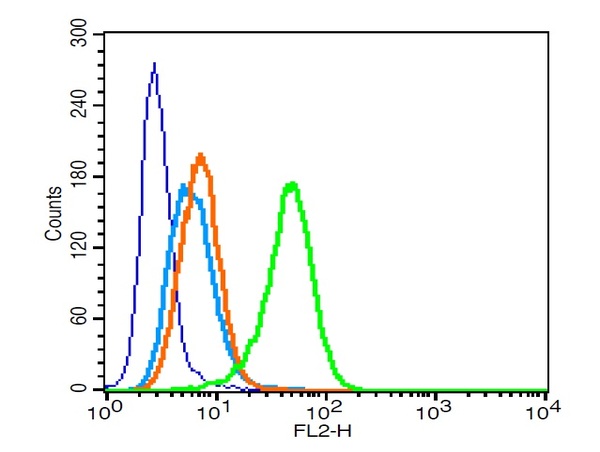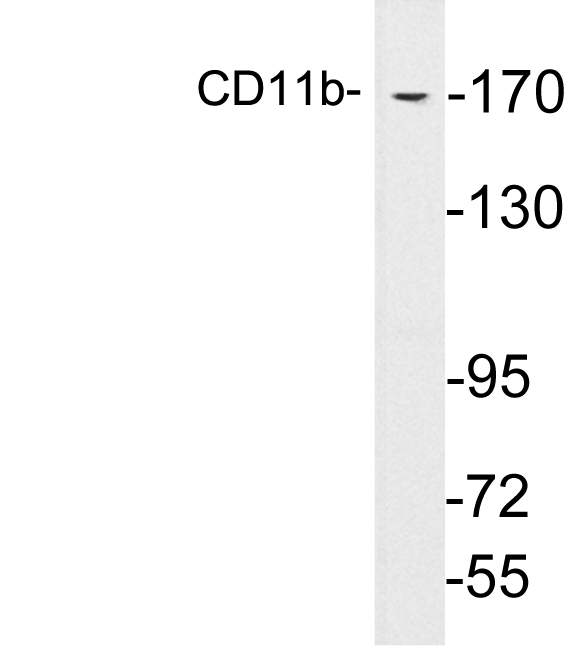CD11b(M1/70), CF405S conjugate, 0.1mg/mL [26628-22-8]
BNC040720
ApplicationsFunctional Assay, Flow Cytometry, ImmunoFluorescence, ImmunoPrecipitation
Product group Antibodies
ReactivityBovine, Human, Mouse, Primate, Rabbit, Rat
TargetITGAM
Overview
- SupplierBiotium
- Product NameCD11b(M1/70), CF405S conjugate, 0.1mg/mL [26628-22-8]
- Delivery Days Customer9
- ApplicationsFunctional Assay, Flow Cytometry, ImmunoFluorescence, ImmunoPrecipitation
- CertificationResearch Use Only
- ClonalityMonoclonal
- Clone IDM1/70
- Concentration0.1 mg/ml
- ConjugateOther Conjugate
- Gene ID3684
- Target nameITGAM
- Target descriptionintegrin subunit alpha M
- Target synonymsCD11B, CR3A, MAC-1, MAC1A, MO1A, SLEB6, integrin alpha-M, CD11 antigen-like family member B, CR-3 alpha chain, antigen CD11b (p170), cell surface glycoprotein MAC-1 subunit alpha, complement component 3 receptor 3 subunit, integrin, alpha M (complement component 3 receptor 3 subunit), leukocyte adhesion receptor MO1, macrophage antigen alpha polypeptide, macrophage-1 antigen alpha subunit, neutrophil adherence receptor alpha-M subunit
- HostRat
- IsotypeIgG2b
- Protein IDP11215
- Protein NameIntegrin alpha-M
- Scientific DescriptionCD11b is a cell adhesion molecule that acts as a receptor for cell surface ligands such as intracellular adhesion molecules (ICAMs) or soluble ligands. Integrins are heterodimeric proteins that contain an alpha chain and beta chain. IntegrinalphaM combines with the Integrinbeta2 to form a leukocyte-specific integrin referred to as macrophage receptor 1 (Mac-1), or inactivated-C3b (iC3b) receptor 3 (CR3). IntegrinalphaM/beta2 is important in the adherence of neutrophils and monocytes to stimulated endothelium, and also in the phagocytosis of complement coated particles. The protein CD11b has been implicated in the various adhesion-related interactions of cells such as monocytes, macrophages, natural killer (NK) cells, and granulocytes. It is part of a heterodimer that consists of CD11b and CD18. It also modulates the uptake of complement-coated particles within the cell. It is commonly used as a microglial marker in tissues derived from the nervous system.Primary antibodies are available purified, or with a selection of fluorescent CF® Dyes and other labels. CF® Dyes offer exceptional brightness and photostability. Note: Conjugates of blue fluorescent dyes like CF®405S and CF®405M are not recommended for detecting low abundance targets, because blue dyes have lower fluorescence and can give higher non-specific background than other dye colors.
- SourceAnimal
- ReactivityBovine, Human, Mouse, Primate, Rabbit, Rat
- Storage Instruction2°C to 8°C
- UNSPSC12352203







